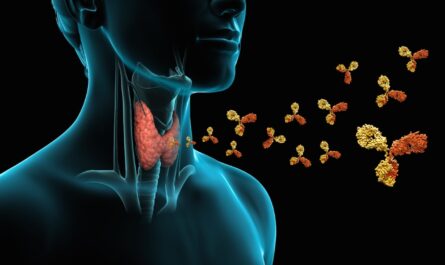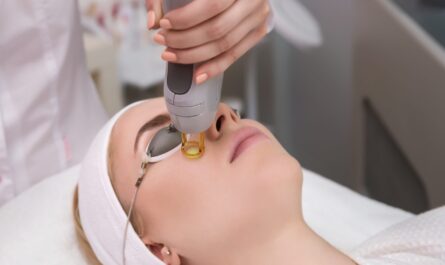Mobile stroke units are specially outfitted ambulance vehicles equipped with technologies like CT scanners, ultrasound machines and laboratories that allow clinicians to begin treating stroke patients immediately in the field. These units bridge the gap between stroke onset and hospital treatment, allowing clinicians to evaluate, diagnose and initiate treatment for patients much faster than traditional ambulance transport alone. By bringing advanced stroke care directly to the patient as early as possible, they have the potential to significantly improve health outcomes.
How It Work?
When dispatch receives a call about a possible Mobile stroke unit, the nearest mobile stroke unit is deployed to the scene along with emergency medical services. It is staffed by a stroke specialist like a neurologist, emergency physician or specially trained paramedic, along with an ambulance crew. On arrival, the stroke team quickly evaluates the patient using scales to determine severity of neurological deficits and decides whether strokes symptoms are ischemic versus hemorrhagic. Diagnostic tests like CT scans, ultrasounds and bloodwork are rapidly performed on the mobile unit to confirm diagnosis and obtain detailed medical information.
If an ischemic stroke is confirmed, the team can immediately administer thrombolysis medications on site that break up blood clots in the brain before they cause irreversible damage. For hemorrhagic strokes, the team can stabilize the patient and expedite their transfer to the hospital for surgical or interventional treatments. All evaluation and treatment details are electronically documented and transmitted to the receiving hospital ahead of ambulance transport. This facilitates continuity of care and allows hospitals to prepare specialized stroke teams and rooms in advance of patient arrival.
Benefits of Faster Treatment Times
Every minute of delay in administering thrombolysis for ischemic strokes results in nearly 2 million neuronal deaths and lost brain function. Mobile stroke units have demonstrated ability to drastically reduce time periods known as “door-to-needle” and “onset-to-treatment”. Studies show they can initiate thrombolysis up to 50 minutes faster on average compared to traditional ambulance transport models of care. Faster treatment times directly correlate to improved patient outcomes including lower mortality rates, reduced disability and increased chances of independent living after a stroke.
Patients receiving thrombolysis within 60 minutes of onset have been shown to regain nearly three times more brain function compared to later treatment. Moreover, early stroke treatment avoids costly long term care needs which can range from $50,000 to over $200,000 per patient annually in some countries and health systems. By achieving better functional recovery and independence for survivors, mobile stroke programs help lower the enormous social and economic burden of stroke on families and society.
Expanding Access to Ischemic Stroke Care
For many rural and remote communities, the nearest comprehensive stroke center offering thrombolysis may be located hours away. Mobile stroke units can better serve these underserved populations by providing diagnostic and treatment capabilities directly in the field. They expand access to time-critical stroke intervention beyond just urban areas with major hospitals nearby. Early experiences show they boost thrombolysis treatment rates even in areas previously unable to offer such care.
Mobile stroke units bring the benefits of reduced time to treatment and improved health outcomes to all communities – regardless of their location or distance from specialized stroke facilities. This is vital considering that response times of traditional ambulances alone may preclude thrombolysis treatment eligibility for some rural stroke patients. By achieving universal coverage of urgent stroke care everywhere including difficult to access regions, mobile programs aim to eliminate treatment disparities based on geographic location.
Operational Challenges and Solutions
While the concept of mobile stroke units seems relatively straightforward, operationalizing them comes with practical challenges. High costs are involved with purchase of vehicles, medical equipment, staffing and ongoing maintenance/upkeep of multi-million dollar programs. Sustainable funding models require strong buy-in from regional health authorities, insurance providers and government bodies.
Another hurdle is deciding optimal coverage areas and basing units strategically so response times keep improving. Data-driven solutions help determine right number/placement of vehicles based on population density, transportation infrastructure and acute stroke incidence rates. Coordinating closely with fixed-wing and helicopter evacuation services also expands reach for truly remote geographical pockets. Careful route planning utilizing real-time traffic updates further boosts response efficiency of mobile units rushing to emergencies.
Inter-hospital patient handoffs also present coordination challenges to ensure continuity of care when transferring stroke cases between facilities. Standardized protocols and electronic health records accessible across organizations help streamline this process. Periodic multidisciplinary reviews involving EMS, hospitals, neurological experts and policymakers additionally ensure program refinement based on emerging evidence and needs on the ground.
Global Spread of the Innovative Concept
Seeing promising results initially from regulated pilots and studies, an increasing number of countries worldwide are now officially operating permanent, integrated mobile stroke programs. Major metropolitan regions like Berlin, London, Los Angeles and Barcelona complement existing ambulance networks with fleets of mobile stroke units. Several developing nations are equally implementing the models tailored to their healthcare infrastructure and resource capabilities.
Rural and remote international locations including Canadian provinces, Australian outback and even Himalayan mountain villages in India and Nepal utilize creative combinations of mobile, fixed-wing and helicopter solutions to deliver hyper-acute stroke intervention anywhere, anytime. The global uptake of this breakthrough prehospital care concept signifies its enormous potential to reduce morbidity and burden of stroke on a population level through more lives saved and preserved functional independence. Continued pooling of data from diverse operational environments will also allow improving and sustaining these programs for maximum community benefit over the long term.
About Author - Ravina Pandya
Ravina Pandya,a content writer, has a strong foothold in the market research industry. She specializes in writing well-researched articles from different industries, including food and beverages, information and technology, healthcare, chemicals and materials, etc. With an MBA in E-commerce, she has expertise in SEO-optimized content that resonates with industry professionals. LinkedIn Profile



